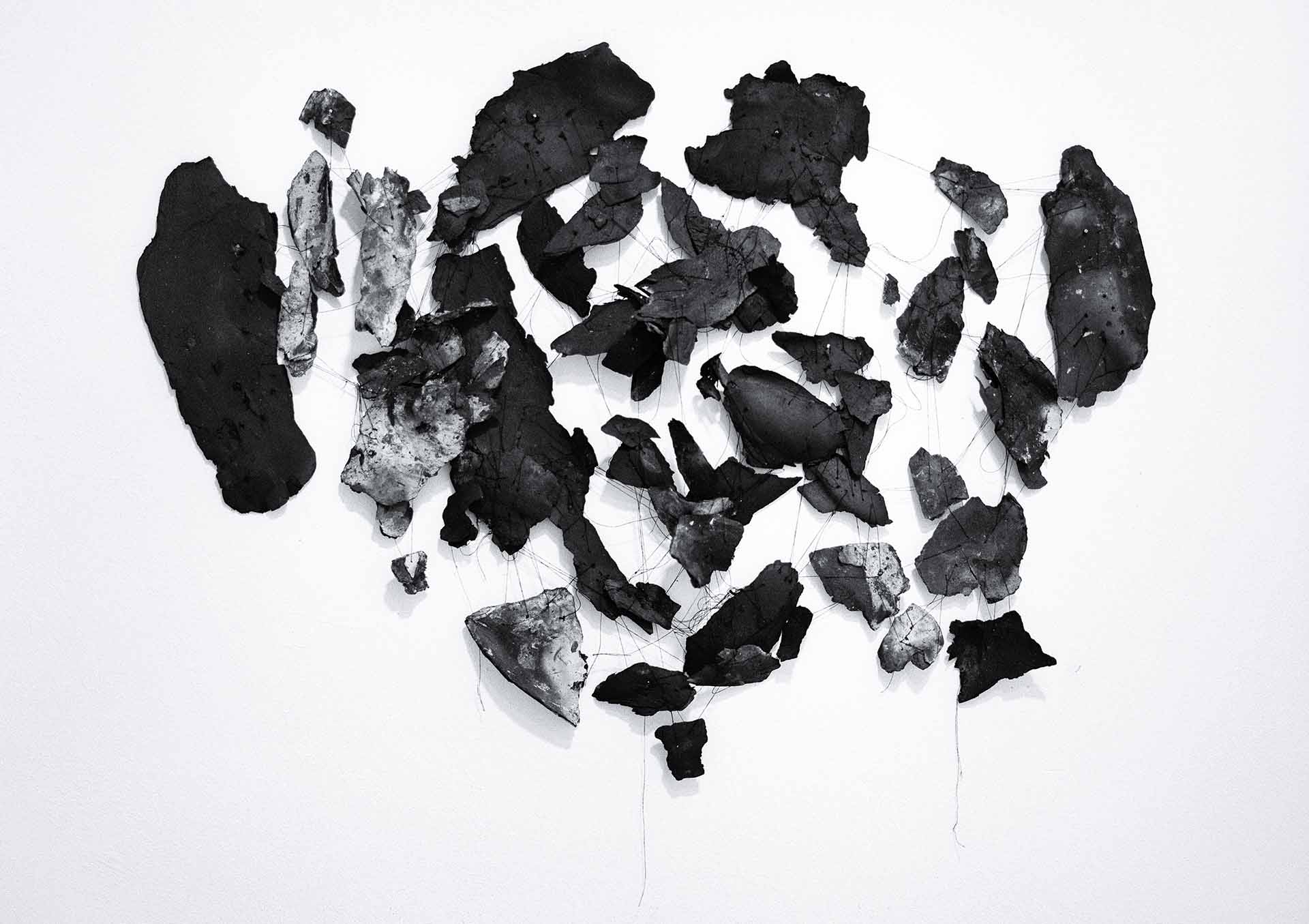
Untitled
Juliette Dumas, 2015
Burnt materials, thread, 40″ x 25″
Image © 2015, courtesy of ART 3 Gallery and the artist
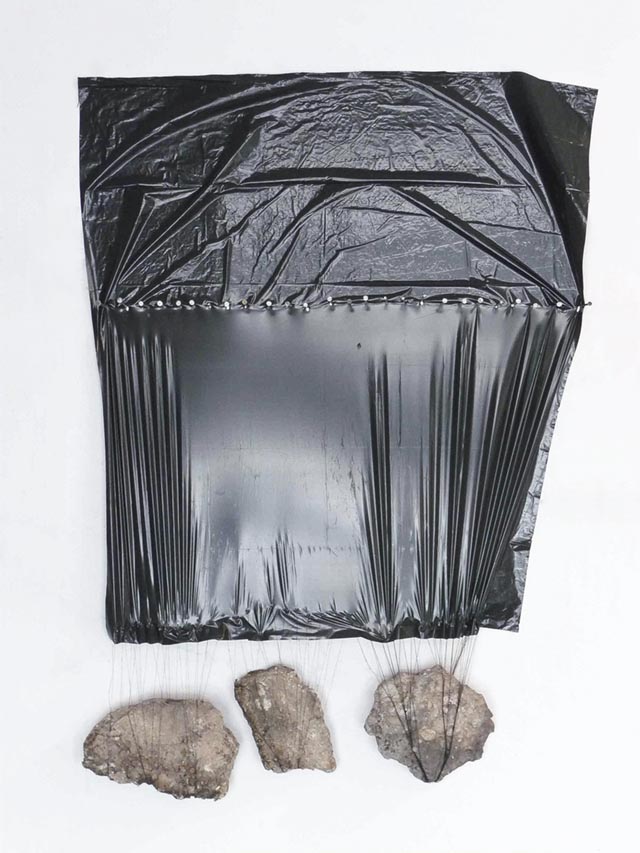
Strategies of Resistance #1
Juliette Dumas, 2012
Plastic bag, nails, marble, 50″ x 30″
Image © 2012, courtesy of ART 3 Gallery and the artist
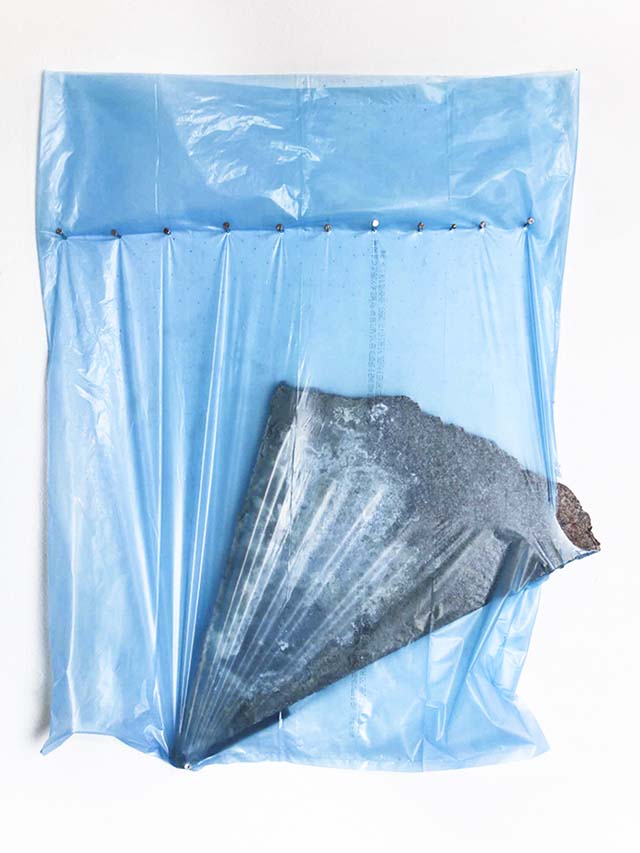
Strategies of Resistance #4
Juliette Dumas, 2012
Plastic bag, nails, marble, 50″ x 30″
Image © 2012, courtesy of ART 3 Gallery and the artist
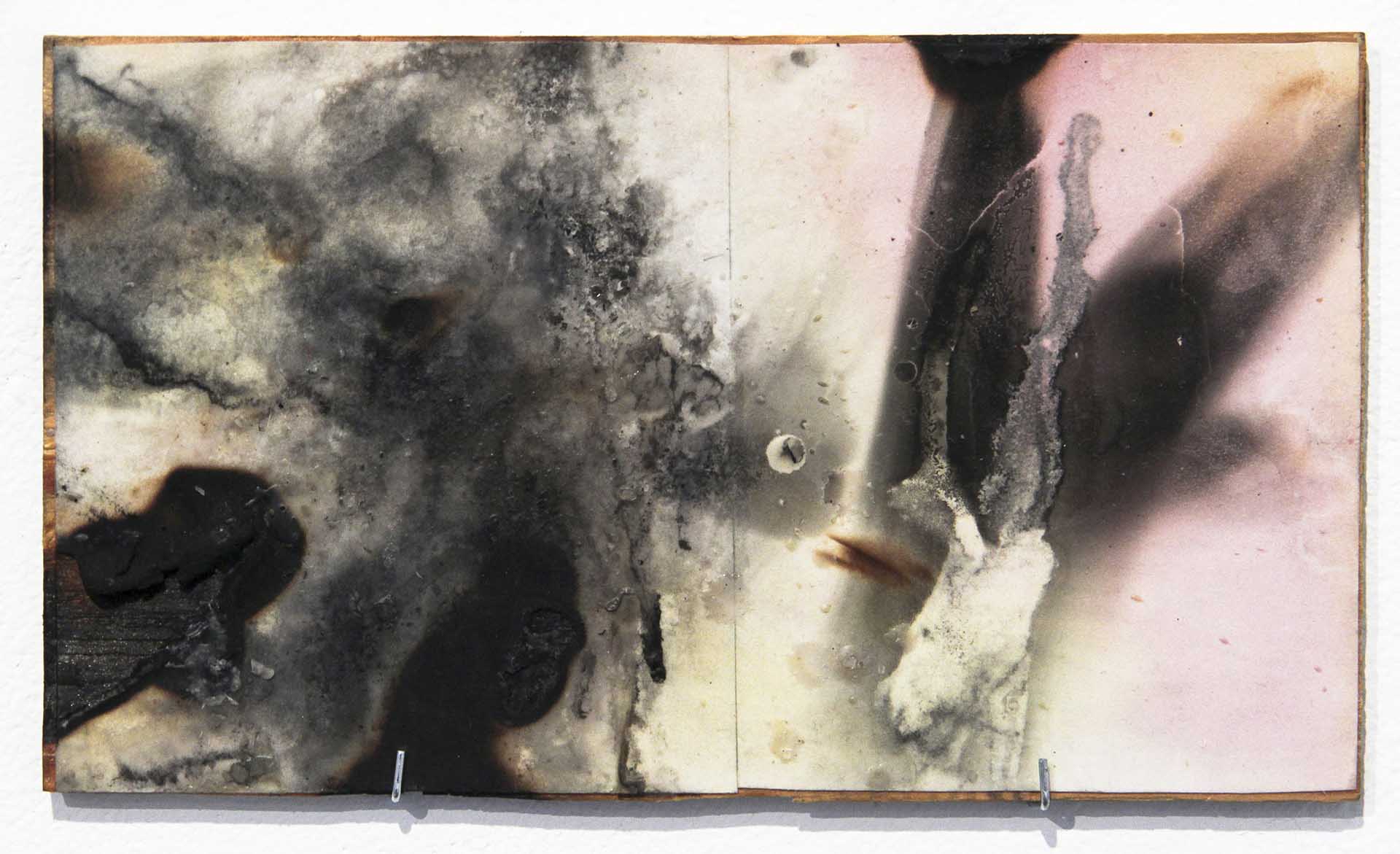
Fire Painting #2
Juliette Dumas, 2013
Wax, soot on paper mounted on wood, 12″ x 18″
Image © 2013, courtesy of ART 3 Gallery and the artist
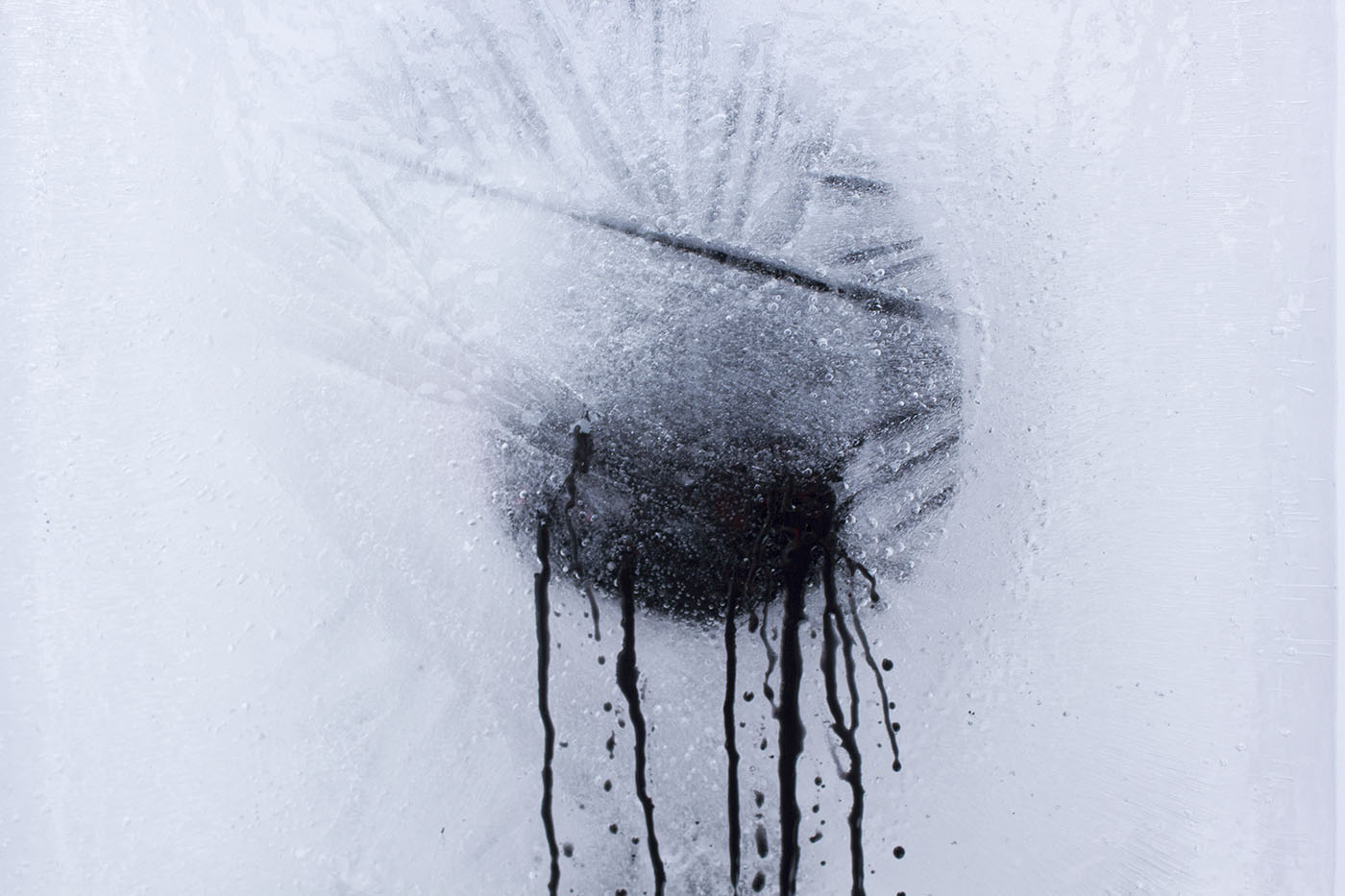
A Brief History of Oil and Ice
Juliette Dumas, 2015
Digital photography, crude oil, ice, dimensions variable
Image © 2015, courtesy of ART 3 Gallery and the artist
About the Artist
Juliette Dumas creates conceptual artworks that address our strained relationship with nature. Dumas uses the physical properties of her materials and the dynamics of their interaction, to create poignant metaphors for humanity’s struggle to control the effects of environmental degradation. In one work, Dumas burns materials and then attempts to sew the brittle, charred remnants back together. In her “Fire Paintings,” Dumas tries to manage an unpredictable fire on the surface of her work, an undertaking that prevents her from controlling the outcome of the painting. Dumas equates these “desperate actions” to the challenge of managing climate change, suggesting that the belief in our ability to rectify adverse outcomes after-the-fact is a troubling leap of faith. In many of her works, Dumas portrays the tension between the natural world and humanity’s obsession with petroleum-based products. In her series entitled “Strategies of Resistance,” Dumas depicts natural materials, such as stone and wood, held in a state of suspension by plastic materials that are stretched and stressed by the relationship. These works portend a failure of the plastic, resulting in a free fall of the natural elements in the work. Similarly, in a work entitled “A Brief History of Oil and Ice,” Dumas encases crude oil inside of a block of ice, but inevitably cannot contain it as it seeps through and drips like tears down the surface of the ice. In this poetic work, Dumas depicts our inability to contain the effects of fossil fuel consumption, relying on melting ice — the quintessential symbol of climate change — to express the futility of our efforts and the accompanying guilt we experience as we continue to consume. In all of these works, Dumas asks us to consider whether our collective approach to managing environmental outcomes is any less futile than the strategies she employs to control the outcomes of her artistic process.
Explore These Artworks
In the artist’s words:
A Brief History of Oil and Ice, 2015 (ice with crude oil): “As the ice painting melts, the crude oil trapped inside of it starts oozing out, expressing the guilt.”
Untitled, 2015 (detail below): “This piece is the result of a desperate action: trying to sew back together something that was burnt. The burnt elements fall apart when you try to stitch them, making the action very delicate, an act of faith when things are too late, symbolizing the situation that climate-conscious people are in now.”
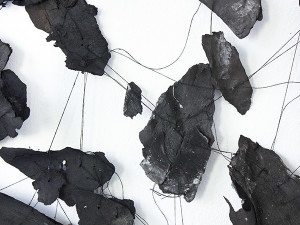
Fire Paintings, 2013: “On the surface of the painting, a fight is staged between lighting fluid and oil. The lighting fluid fuels the fire, the oil quenches it. Because I have to concentrate entirely on the struggle of the fire, I cannot control the final outcome of the painting.”
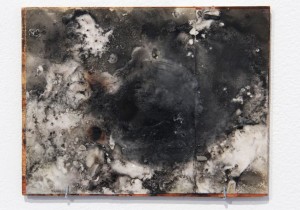
Fire Painting #1, 2013, wax, soot on paper mounted on wood, 12″ x 16″
Recent reports from the Intergovernmental Panel on Climate Change (IPCC) suggest that irreversible consequences from climate change are becoming increasingly likely and that predictable and controllable consequences may be “an exception rather than a rule.”
Conceptual artworks, such as the works by Juliette Dumas in this exhibition, are most successful when they deliver a poignant and legible message through metaphor. In these works, Dumas achieves this result by using the properties and behaviors of her materials to tell the story about our tenuous approach to environmental issues.
Featured Actions:
* Ditch your car and use public transit when possible. Better yet, get outside and walk or ride a bike to your destination.
* Carpool when possible
* Reduce your car trips by planning ahead and consolidating your errands
* Your pledge will be counted in Earth Day Network’s “A Billion Acts of Green” campaign. Learn more about this campaignhere.
Reserved for future conversations.











